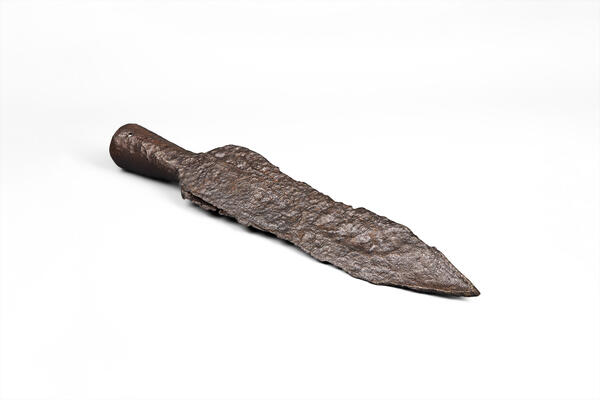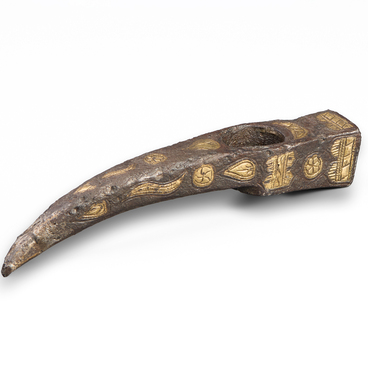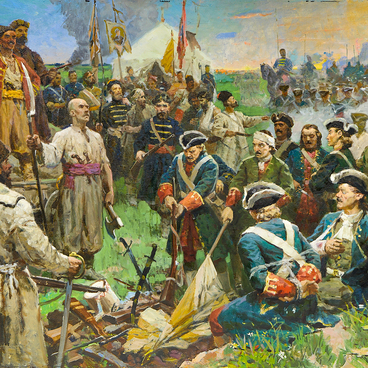A bear spear was found on the site of the first Belgorod fortress, built in 1596 on the Melovaya Mountain. In 1980, the item entered the collection of the Belgorod State Historical and Local History Museum.
A bear spear is a shaft-piercing blade weapon, a type of spear with a wider and more massive double-edged blade (feather) mounted on a shaft (ratovishche). Unlike spears, bear spears were heavier and had thicker shafts made from hardwoods. Thus, a bear spear was an enlarged, reinforced, and weighted spear. The shaft reached the height of a person. The blade of the bear spear was mostly leaf-shaped, and its weight could reach up to one kilogram.
The bear spear appeared in Russia in the 12th century as a hunting weapon. It was very effective when hunting large animals, because it could inflict wide and deep wounds.
Hunting bear spears were often made with a crossguard at the base of the blade, which prevented the weapon from penetrating deeply into the wound and helped to keep the beast at a safe distance. For hunting, the shaft was wrapped with leather straps, which did not allow the weapon to slip in the hands. Often, a bunchuk made of fur or horsehair was attached under the tip, which prevented blood from getting onto the shaft.
Subsequently, bear spears were primarily used by foot soldiers — archers (streltsy), and from the 16th century, by the local cavalry, which consisted mainly of noblemen and sons of boyars.
There was no crossguard on the combat bear spears. The wide, massive blade allowed not only for thrusting but also for effective slashing. In warfare, physically strong warriors were usually armed with bear spears. Its reinforced construction enabled the delivery of more powerful strikes. Due to its weight, the bear spear had significant penetrating power. It could pierce even the heaviest armor and was effective against both horses and riders.
The bear spear remained in the Russian army’s
arsenal until the end of the 17th century. In the 18th century, it was
completely phased out of military use and was used exclusively as a hunting
weapon. Such bear spears had a crossguard behind the socket, which allowed the
wielder to stop the animal. In Russia, hunting bears with such a bear spear was
very common until the end of the 19th century.



